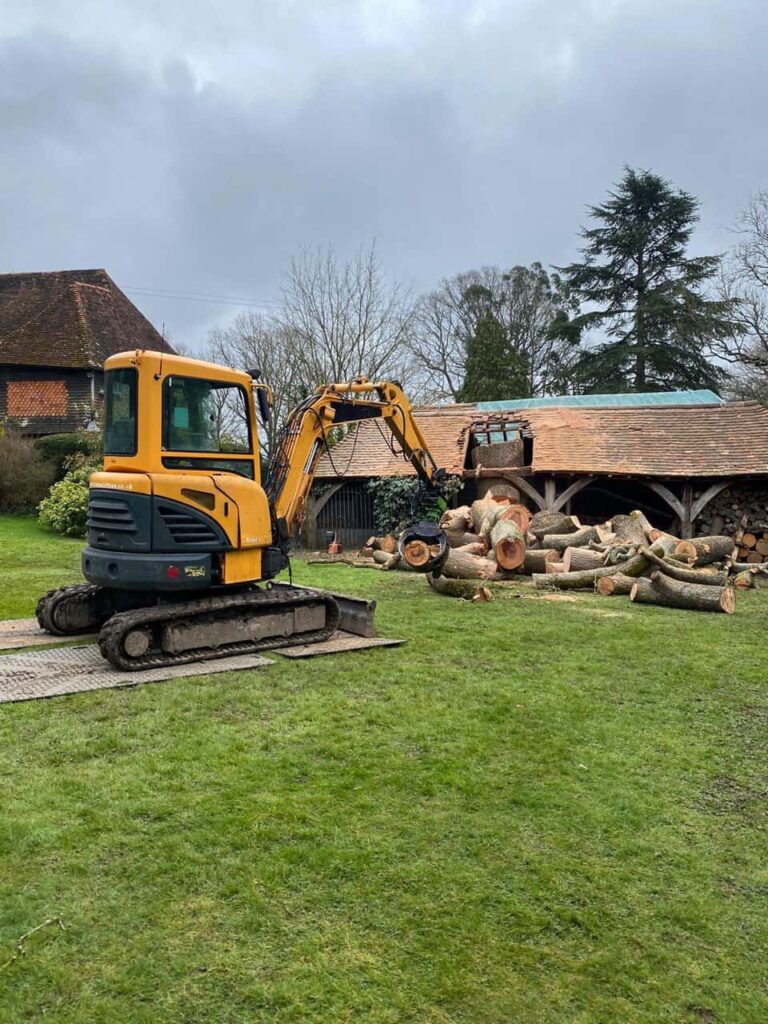When to Prune Newly Planted Trees: Best Practices for Establishing Strong Growth
Planting new trees is an investment in the future beauty and health of your landscape. However, to ensure that these trees grow strong and healthy, it’s essential to understand the importance of proper pruning at the right time. At Shortstown Tree Surgeons, based in Shortstown, Bedfordshire, we know that pruning newly planted trees requires careful consideration and technique. In this blog post, we’ll discuss the best practices for pruning newly planted trees and how proper timing can help establish strong growth.
1. Why Pruning Is Essential for Young Trees
Pruning is a critical aspect of tree care that shapes the structure of the tree as it grows. For newly planted trees, pruning can help develop a strong framework of branches, promote healthy growth, and prevent future issues.
- Encouraging proper structure: Early pruning helps establish a strong, well-balanced structure that will support the tree as it matures.
- Preventing future problems: Correcting minor structural issues early can prevent more significant problems down the line, such as weak branch unions or poor form that could lead to damage during storms.
- Improving air circulation and light penetration: Pruning opens up the canopy, allowing air and light to circulate more freely, which reduces the risk of diseases and promotes healthy growth.
2. When to Prune Newly Planted Trees
Timing is everything when it comes to pruning newly planted trees. While it’s tempting to prune a tree immediately after planting to improve its appearance, it’s important to give the tree time to establish its root system before any significant pruning takes place.
- First year after planting: In the first year, it’s best to focus on allowing the tree to establish its roots. During this period, only light pruning should be done to remove dead, damaged, or crossing branches.
- Second to third year: After the first year, you can begin shaping the tree more intentionally. This is the time to prune any branches that are growing too low or are competing with the leader (the central, upright branch that forms the tree’s main structure).
- Winter pruning: Pruning during the winter months when the tree is dormant is often recommended. This allows you to see the tree’s structure more clearly and ensures that the tree’s energy is focused on root and shoot growth in the spring.
3. How to Prune Newly Planted Trees Correctly
Pruning young trees requires a gentle hand and careful planning to ensure that the tree develops a strong, healthy structure. Here are some key practices to follow:
- Remove dead or damaged branches: Begin by removing any dead, damaged, or diseased branches. This helps the tree focus its energy on healthy growth.
- Avoid over-pruning: For newly planted trees, less is more. Avoid removing too much foliage, as young trees need their leaves to produce energy through photosynthesis, which is essential for root establishment.
- Maintain a central leader: The central leader should remain the dominant, upright stem. Remove any competing branches that could interfere with the development of a strong, vertical trunk.
- Create a balanced structure: Ensure that the branches are evenly spaced around the tree and that no branches grow too closely together. This will help the tree develop a strong, balanced canopy.
4. Common Mistakes to Avoid When Pruning Young Trees
Pruning is a delicate process, and mistakes made during this stage can affect the long-term health and appearance of the tree. Here are some common errors to avoid:
- Pruning too soon: Pruning too early can stress a newly planted tree that is still trying to establish its roots. It’s best to wait until the tree has settled into its new environment before making significant cuts.
- Topping the tree: Never “top” a tree by cutting off the upper branches to reduce its height. This can severely damage the tree and lead to weak, unstable growth.
- Removing too much at once: Over-pruning can reduce the tree’s ability to produce energy, which can slow its growth. Always aim to remove no more than 25% of the tree’s canopy in a single year.
5. The Benefits of Professional Pruning Services
Pruning newly planted trees requires knowledge, skill, and precision. At Shortstown Tree Surgeons, our team of professional arborists understands the unique needs of young trees and can provide expert pruning services to help them thrive.
- Expert assessment: We evaluate the structure and health of your tree to determine the best pruning strategy for its specific needs.
- Precision pruning: Our team uses precise techniques to prune your tree in a way that promotes strong, healthy growth without causing unnecessary stress.
- Long-term care: We can provide ongoing tree care services to ensure that your newly planted trees develop into strong, beautiful features of your landscape.
Conclusion
Pruning newly planted trees is essential for establishing strong growth and ensuring their long-term health. By following best practices and understanding when and how to prune, you can help your young trees thrive. At Shortstown Tree Surgeons, we offer professional tree care services in Shortstown, Bedfordshire, designed to support the growth and health of your trees from the moment they’re planted.
Call us on: 01234 862 087
Click here to find out more about Shortstown Tree Surgeons
Click here to complete our contact form and see how we can help with your tree’s needs.

